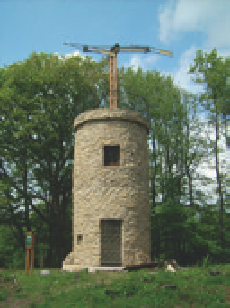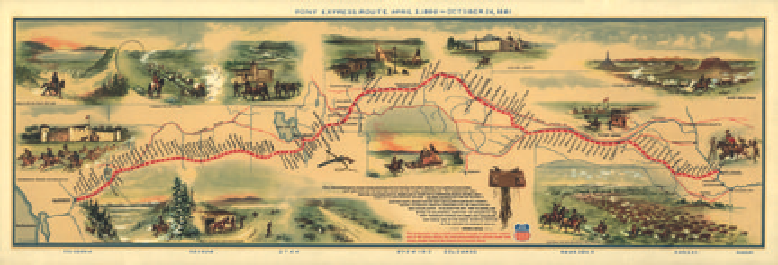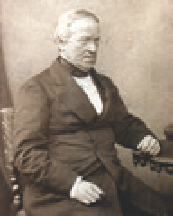Information Technology Reference
In-Depth Information
Fig. 10.4. The route of the famous Pony
Express in the United States. This mail
service showed that fast transcontinen-
tal communications were possible, but
the service was expensive and was over-
taken by telegraph technology along the
same route. The Pony Express operated
for less than two years, from April 1860
to October 1861.
and then only during the daytime. When Napoleon Bonaparte came to power
in 1799, he quickly recognized the military value of such a rapid communica-
tion system and arranged for a portable version of Chappe's semaphore sig-
naling equipment to be developed. In searching for a name for his invention,
Chappe devised the word
telegraphe
from two Greek words meaning
to write at
a distance
. His semaphore system operated with a countrywide network of tow-
ers in France for more than fifty years (
Fig. 10.3
). Finland, Denmark, Sweden,
Russia, and the United Kingdom quickly established similar optical telegraph
networks. At the height of the network's popularity, nearly a thousand sema-
phore towers operated across Europe.
For all the success of Chappe's system, it was superseded by a superior tech-
nology after little more than fifty years: telegraph technology based on using
electric signals that traveled over cables. Before the telegraph network became
fully operational, couriers on horseback used to deliver long-distance mes-
sages. In the United States, the Pony Express linking Missouri with California
operated for only slightly more than a year between 1860 and 1861, but could
not compete for long with the telegraph (
Fig. 10.4
). The electric telegraph had
much greater speed and reliability, and operated in all weather conditions. In
the United Kingdom, it was an entrepreneur named William Fothergill Cooke
who, in an uneasy collaboration with physics professor Charles Wheatstone,
worked hardest to raise enthusiasm for building an electric telegraph net-
work to span the country (
B.10.4
). At about the same time, in the United States,
Samuel Morse (
B.10.5
), a painter and scientist, was also working tirelessly
toward the same objective. The electric telegraph sent messages using a code
of dots and dashes that we now call Morse code. Although the specific telegraph
technology used in the United Kingdom and the United States differed in detail,
Fig. 10.3. One of Claude Chappe's
telegraph towers was rebuilt near
Saarbrucken, in Germany. The French
engineer Chappe succeeded in covering
France with a network of 556 stations
stretching a total distance of 4,800
kilometers. The network was used for
military and national communications
from 1792 to the 1850s.
B.10.4. Entrepreneur William Cooke (1806-79) and physicist Charles Wheatstone (1802-75) pio-
neered the telegraph in the United Kingdom. After a slow start, undersea cables were laid
connecting the whole of the British Empire.




Search WWH ::

Custom Search